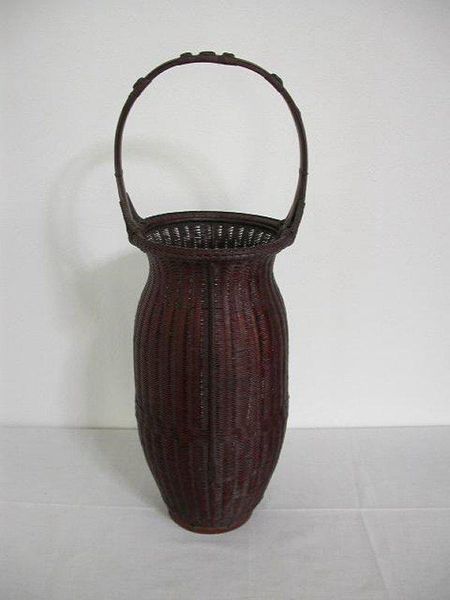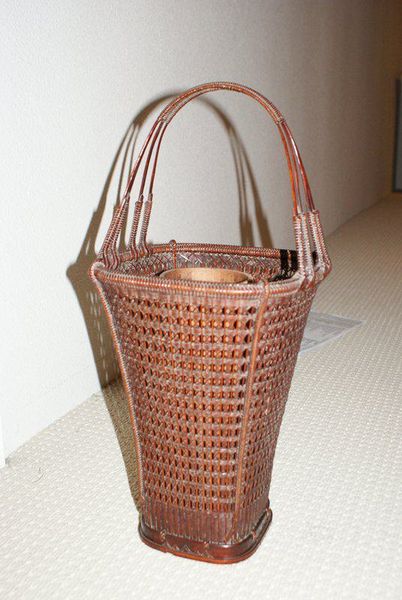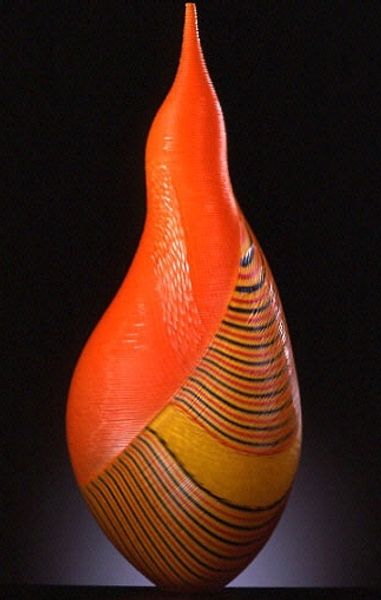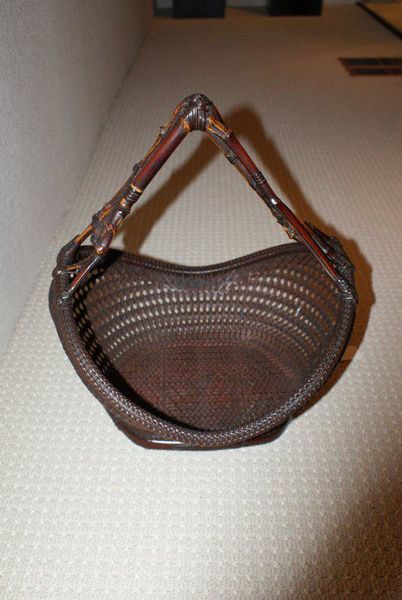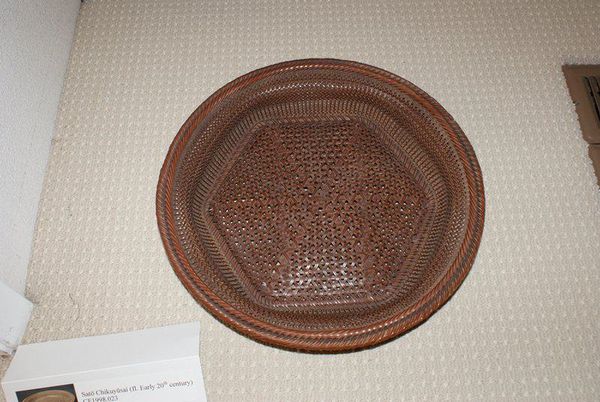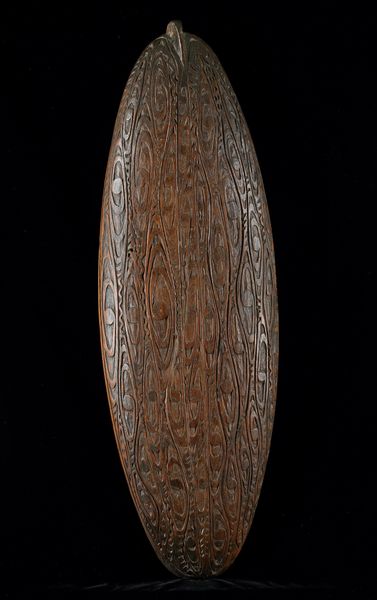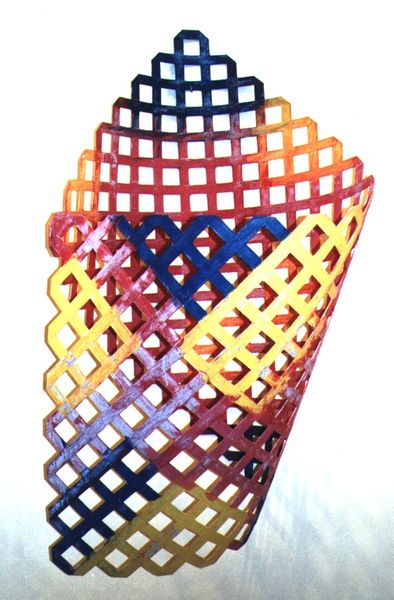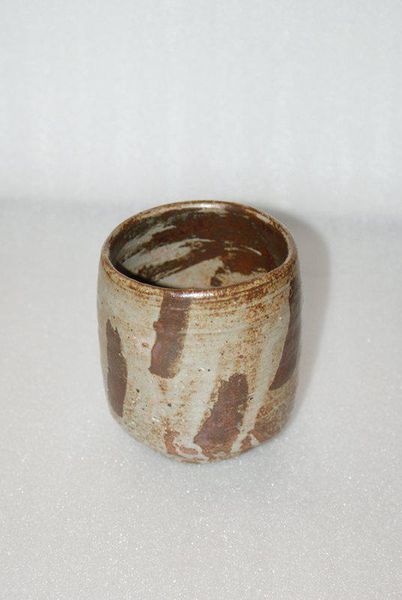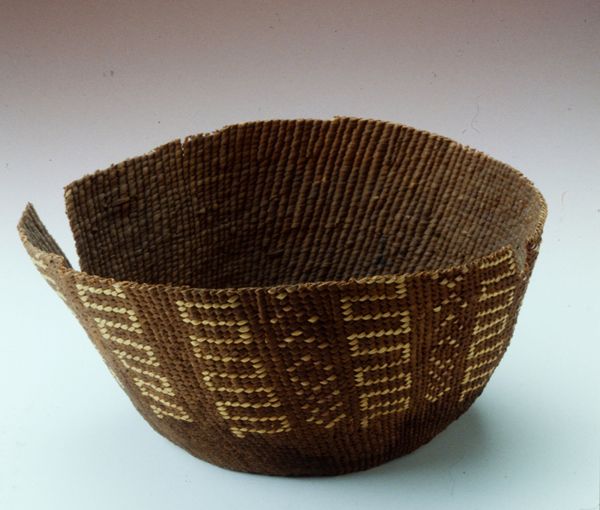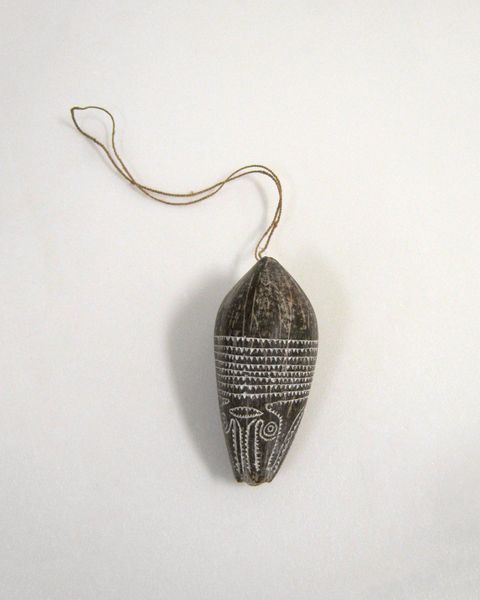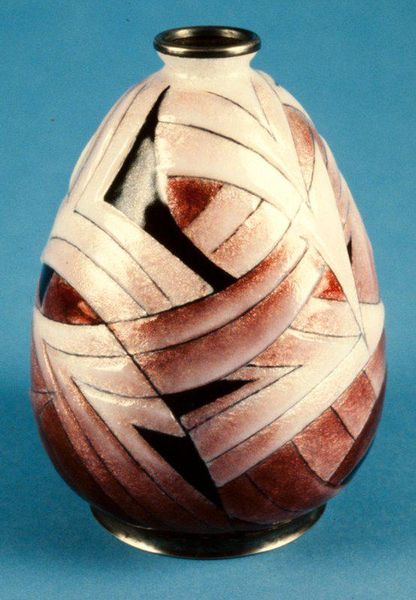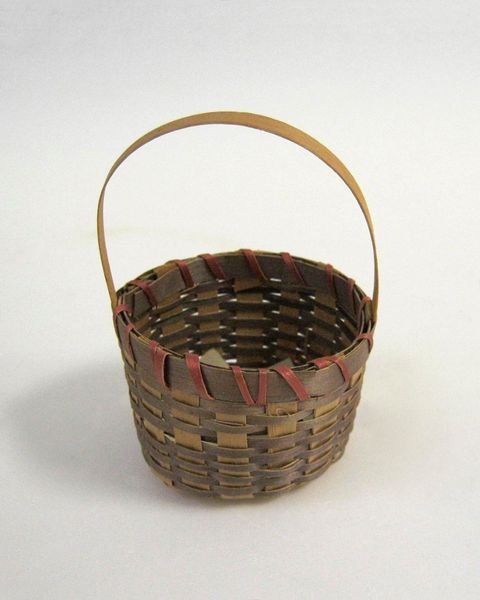
Chinese-Style Basket of Emperor Jiaqing Period c. 20th century
0:00
0:00
fibre-art, carving, weaving, sculpture, wood
#
fibre-art
#
carving
#
asian-art
#
weaving
#
form
#
stoneware
#
geometric
#
sculpture
#
ceramic
#
wood
#
decorative-art
Dimensions: 11 × 4 1/4 × 4 1/8 in. (27.94 × 10.8 × 10.48 cm)
Copyright: No Known Copyright
Curator: Looking at this intriguing piece, titled "Chinese-Style Basket of Emperor Jiaqing Period", attributed to Yamamoto Shōken and created around the 20th century, what's your initial impression? Editor: It strikes me as both incredibly delicate and formally rigid. There's something austere about the repeated geometric patterns. It's deceptively simple, but something about it seems burdened by history. Curator: Burdened is an interesting choice of word. Yamamoto Shōken was a master of Japanese bamboo art. His meticulous weaving reflects deep traditions linking artistry to cultural refinement and Zen principles. Do you see how the shape also becomes an almost abstract meditation on function and void? Editor: Yes, the empty space encased by the weaving creates tension. Considering the period and presumed cultural links, the "void" itself suggests deeper socio-political layers. How were such refined, but everyday objects seen by broader society? Was this utilitarian, aspirational, purely decorative? Curator: Often these objects blur categories. On one level, a basket is for carrying, storage. But it also symbolizes prosperity, careful management, maybe even ritual offering depending on use. Formally, note how vertical and horizontal lines intersect. This is hardly random – in some systems, such structured grids stand in for universal harmony, or societal order. Editor: It’s compelling to consider how such objects moved, both physically and symbolically. Given the implied era—the late Qing Dynasty was, after all, fraught with internal strife and external pressure—it’s easy to imagine the symbolic weight imbued on art that reflects the Emperor’s reign. Did such objects convey resilience? Or perhaps denial? Curator: A potent point about resilience. Everyday objects often become loaded signifiers during moments of social change. But perhaps this basket also communicates a sense of cultural continuity—artistic traditions enduring, perhaps as a subtle resistance to upheaval. Editor: Yes. On a simpler note though, looking again, the craftsmanship! It makes you reflect on the dedication to technique – hours of labour producing something so subtle. I wonder what the maker's world looked like while he or she weaved? Curator: The basket draws you in many directions then – history, craft, symbol – a quiet echo of artistic skill intertwined with profound social transformations. Editor: A humble vessel speaking volumes about what societies value, conceal, and aspire toward through form.
Comments
No comments
Be the first to comment and join the conversation on the ultimate creative platform.
